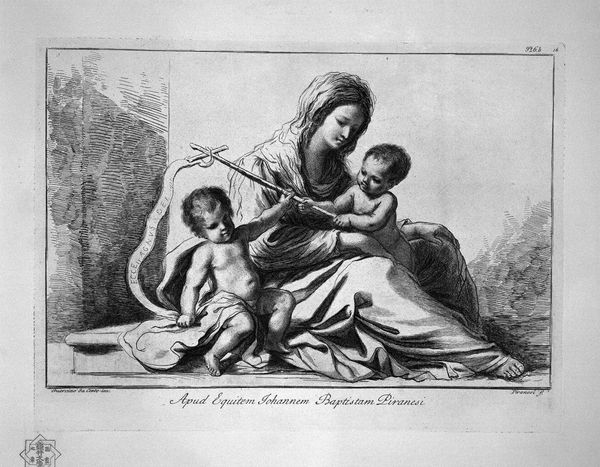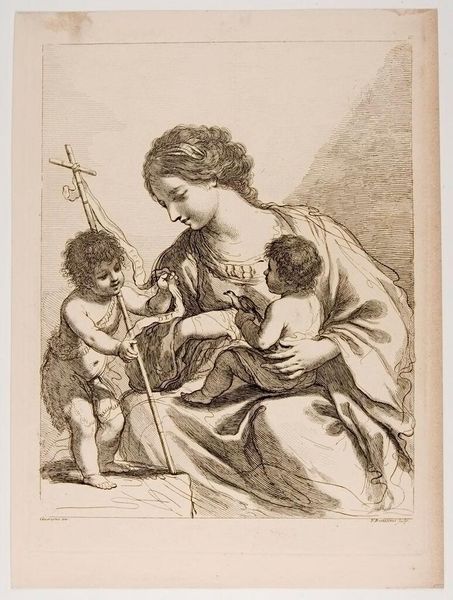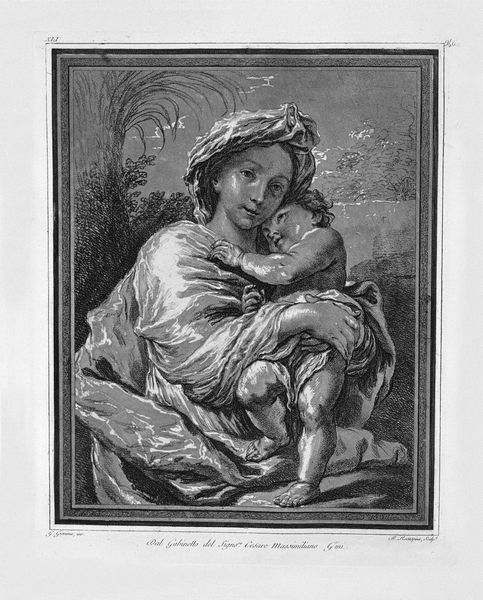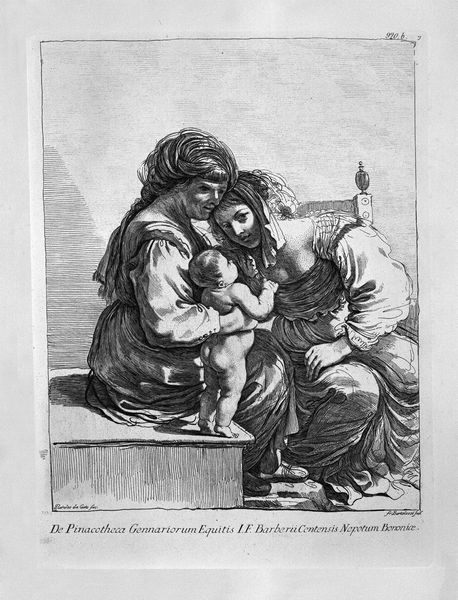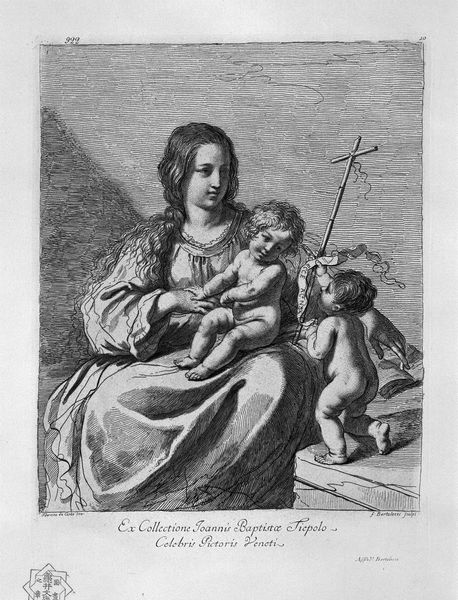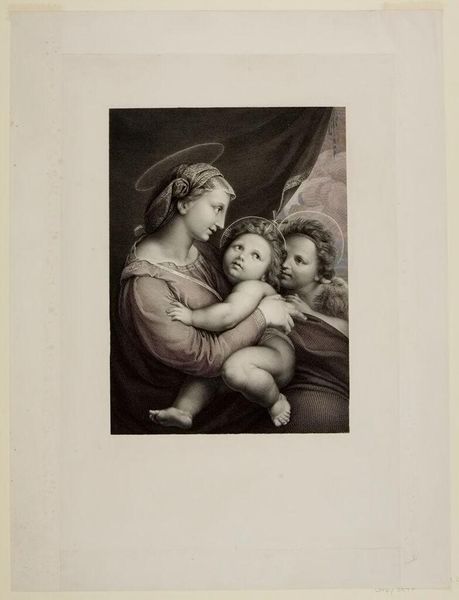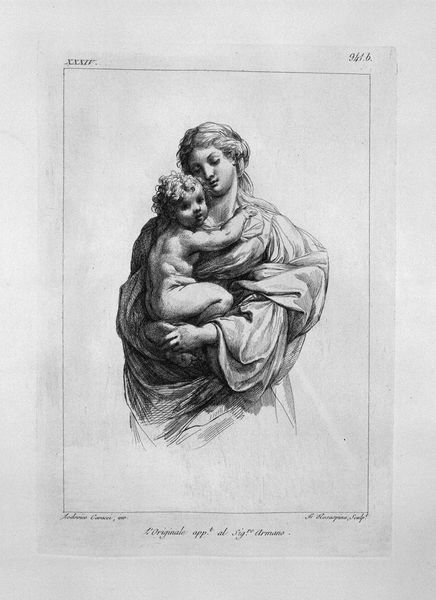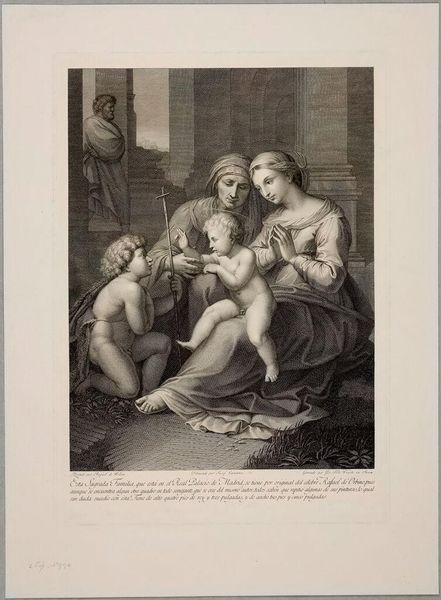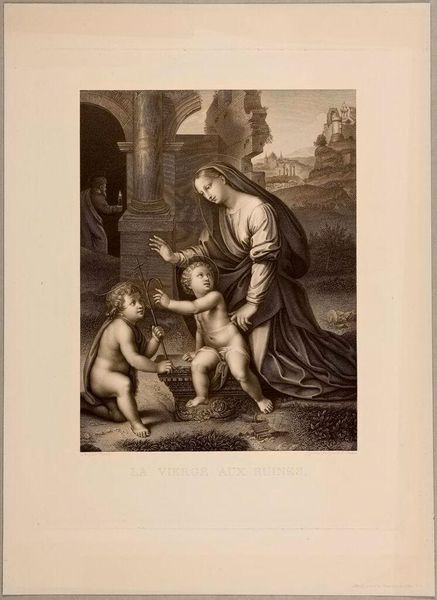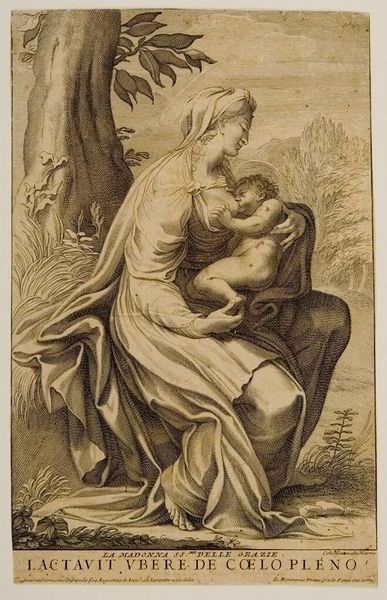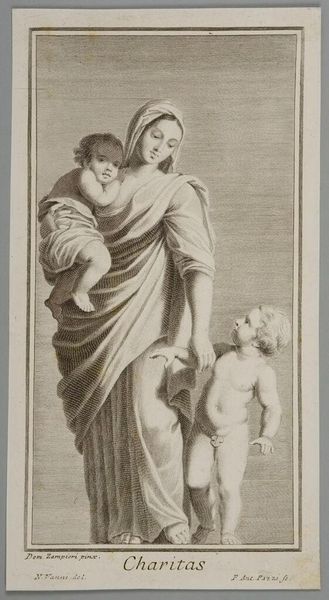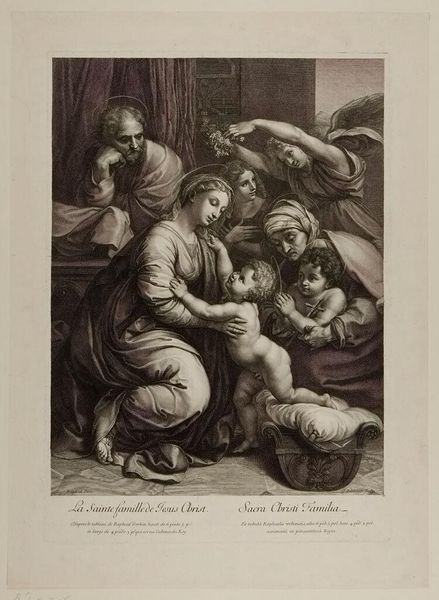
Holy Family: the Virgin seated on the ground feeding the Holy Child standing
0:00
0:00
print, engraving
#
portrait
#
baroque
# print
#
figuration
#
christianity
#
portrait drawing
#
history-painting
#
engraving
#
christ
Copyright: Public domain
Curator: Before us, we have an engraving titled "Holy Family: the Virgin seated on the ground feeding the Holy Child standing" by Giovanni Battista Piranesi. It presents a classic biblical scene. Editor: Immediately, the image evokes a sense of serene intimacy. The stark monochrome emphasizes the texture of the fabric and the flesh, giving it a sculptural quality. I am intrigued by how this domestic scene is rendered through the laborious technique of engraving. Curator: Indeed. The composition relies heavily on Baroque sensibilities; note the subtle asymmetry and dramatic play of light and shadow achieved via the delicate cross-hatching. The figures are positioned in a triangular format that brings your focus toward Christ and the Virgin. Editor: Focusing on the physical act of production, Piranesi would have worked meticulously with metal tools, incising lines onto a copper plate, inking it, and pressing it onto paper. How many iterations would he have had to undergo? Also, considering this process, doesn’t the reproductive nature of prints, particularly engravings, render them almost "low-brow" in their function to be accessible? Curator: The medium absolutely informs our understanding. Prints democratized art, making it accessible beyond the elite. However, to disregard Piranesi’s mastery over the tools diminishes the artistry. The use of line is so descriptive! Notice how it creates volume, defines the characters' emotion, and dictates the light throughout. There’s nothing utilitarian about how Piranesi’s vision permeates this artwork. Editor: Fair point. And thinking about it now, what did that do for distribution and perception in the cultural context? Curator: It reinforces the Christian narrative while providing viewers with access to fine art reproductions. Perhaps this print fostered piety within homes. One should wonder if it normalized religious subjects in non-ecclesiastical settings. Editor: That leads to a critical point. The dissemination of such imagery not only served devotional purposes but also actively participated in shaping cultural beliefs and perceptions of motherhood, childhood, and the ideal family unit. So, it is beautiful because of its craft, but the underlying themes in the work tell another tale altogether. Curator: Considering Piranesi’s detailed mark-making, one must acknowledge that, regardless of dissemination, his technical and artistic capabilities produced an everlasting statement piece for years to come. Editor: True. This engraving exemplifies how materials and making processes intersect with historical, social, and philosophical concerns to produce cultural significance.
Comments
No comments
Be the first to comment and join the conversation on the ultimate creative platform.
